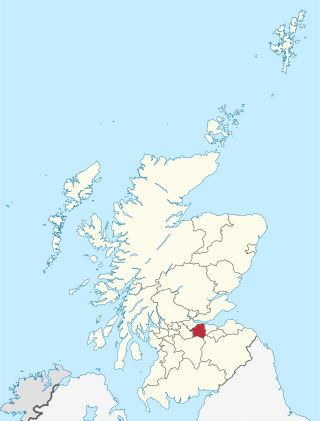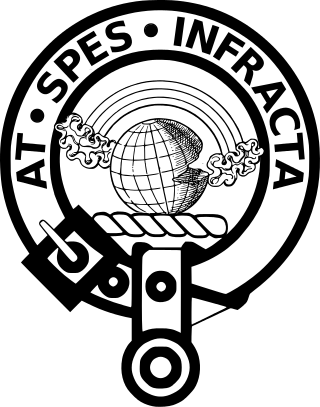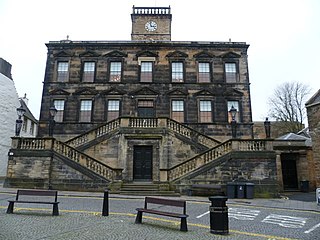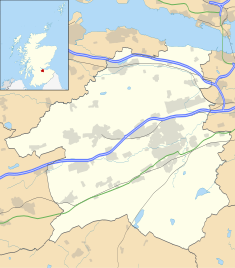
Sir Thomas Dalyell, 11th Baronet, known as Tam Dalyell, was a Scottish Labour Party politician who was a member of the House of Commons from 1962 to 2005. He represented West Lothian from 1962 to 1983, then Linlithgow from 1983 to 2005. He formulated what came to be known as the "West Lothian question", on whether non-English MPs should be able to vote upon English-only matters after political devolution. He was also known for his anti-war, anti-imperialist views, opposing the Falklands War, the Gulf War, the War in Afghanistan and the Iraq War.

Lothian is a region of the Scottish Lowlands, lying between the southern shore of the Firth of Forth and the Lammermuir Hills and the Moorfoot Hills. The principal settlement is the Scottish capital, Edinburgh, while other significant towns include Livingston, Linlithgow, Bathgate, Queensferry, Dalkeith, Bonnyrigg, Penicuik, Musselburgh, Prestonpans, Tranent, North Berwick, Dunbar, Whitburn and Haddington.

West Lothian is one of the 32 council areas of Scotland, and was one of its historic counties. The county was called Linlithgowshire until 1925. The historic county was bounded geographically by the Avon to the west and the Almond to the east. The modern council area occupies a larger area than the historic county. It was reshaped following local government reforms in 1975: some areas in the west were transferred to Falkirk; some areas in the east were transferred to Edinburgh; and some areas that had formerly been part of Midlothian were added to West Lothian.

Broxburn is a town in West Lothian, Scotland. It is 12 miles (19 km) from the West End of Edinburgh, 5 miles (8.0 km) from Edinburgh Airport and 5 miles (8.0 km) to the north of Livingston. Originally a village known as Easter Strathbock in the medieval period, by 1600, the village had become known as Broxburn. The area developed rapidly during the Victorian era as a result of industrialisation related to shale oil extraction. While much of the industry in the area is now diminished, the town has continued to grow following new residential development, resulting in Broxburn forming a conurbation with neighbouring Uphall. It lies just to the south of Winchburgh.

Marquess of Linlithgow, in the County of Linlithgow or West Lothian, is a title in the Peerage of the United Kingdom. It was created on 23 October 1902 for John Hope, 7th Earl of Hopetoun. The current holder of the title is Adrian Hope.

Bathgate is a town in West Lothian, Scotland, 5 miles (8 km) west of Livingston and adjacent to the M8 motorway. Nearby towns are Linlithgow, Livingston, and West Calder. A number of villages fall under the umbrella of Bathgate, including Blackburn, Whitburn, Stoneyburn, Armadale,Torphichen and Fauldhouse.

Hopetoun House is a country house near South Queensferry owned by the Hopetoun House Preservation Trust, a charity established in 1974 to preserve the house and grounds as a national monument, to protect and improve their amenities, and to preserve the furniture, paintings, manuscripts, and other articles of historical interest associated with the house. The south wing of the house is occupied by the family of Adrian Hope, 4th Marquess of Linlithgow. The house is a Category A listed building and the grounds are included in the Inventory of Gardens and Designed Landscapes in Scotland.

Abercorn is a village and civil parish in West Lothian, Scotland. Close to the south coast of the Firth of Forth, the village is around 5 km (3.1 mi) west of South Queensferry. The parish had a population of 458 at the 2011 Census.

Livingston Village is a village in West Lothian, dating back to the 12th century. Originally a farming village in West Lothian it is now in the heart of the town of Livingston.

Linlithgow was a county constituency of the House of Commons of the Parliament of the United Kingdom from 1983 to 2005. It elected one Member of Parliament (MP) by the first past the post system of elections.
This is a list of people who have served as Lord Lieutenant of West Lothian. The office was known as the Lord Lieutenant of Linlithgowshire until 1921.

Linlithgow is a town in West Lothian, Scotland. It was historically West Lothian's county town, reflected in the county's historical name of Linlithgowshire. An ancient town, it lies in the Central Belt on a historic route between Edinburgh and Falkirk beside Linlithgow Loch. The town is situated approximately 20 miles (32 km) west of Edinburgh.

Clan Hope is a Scottish clan of the Scottish Lowlands.

West Lothian Council is the local authority for West Lothian, one of the 32 council areas of Scotland.

Torphichen is a historic small village located north of Bathgate in West Lothian, Scotland. The village is approximately 18 miles (29 km) west of Edinburgh, 7 miles (11 km) south-east of Falkirk and 4 miles (6.4 km) south-west of Linlithgow. The village had a population of 570 in the and a population of 710 in 2016. Torphichen's placename may be Gaelic in origin, e.g., "Tóir Féichín", Tor Fithichean, or partly from Brythonic "tre fychan" or small hill.

Linlithgow Burgh Halls is a municipal structure at The Cross, Linlithgow, Scotland. The complex includes the Town House, the former headquarters of Linlithgow Burgh Council, which is a Category A listed building. and the Old County Hall, the former headquarters of West Lothian County Council, which is a Category B listed building.

County Buildings is a municipal structure in St Catherine Street in Cupar, Fife, Scotland. The building, which was the meeting place of Fife County Council, is a Category B listed building.

West Lothian Civic Centre is a municipal building on Howden South Road in Livingston, West Lothian in Scotland. The building serves as the offices and meeting place of West Lothian Council as well as the venue for hearings of Livingston Sheriff Court.


















